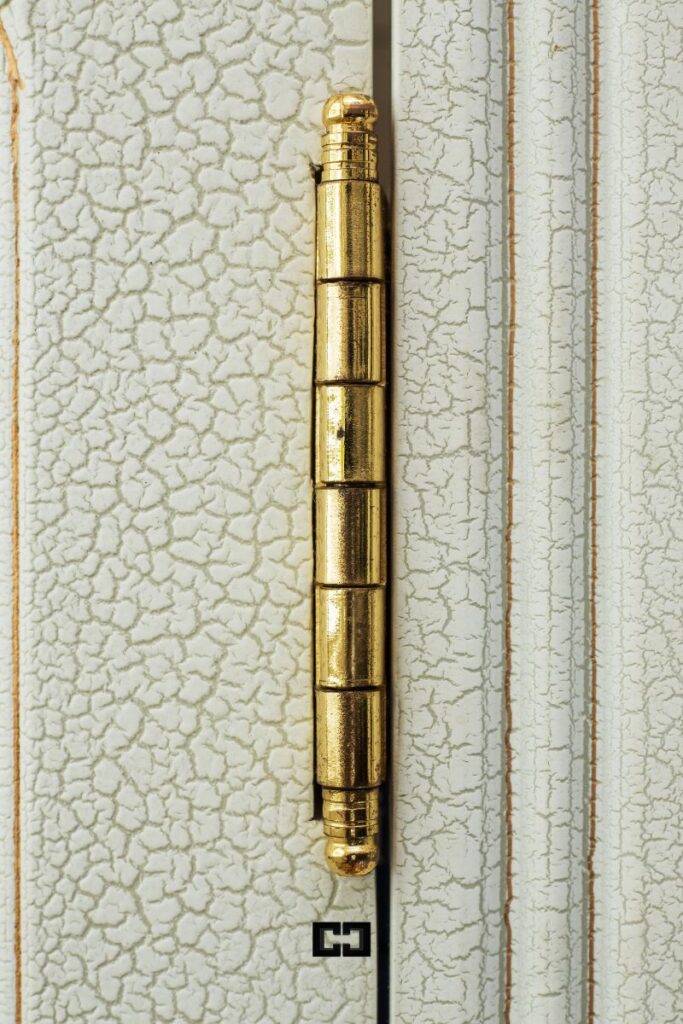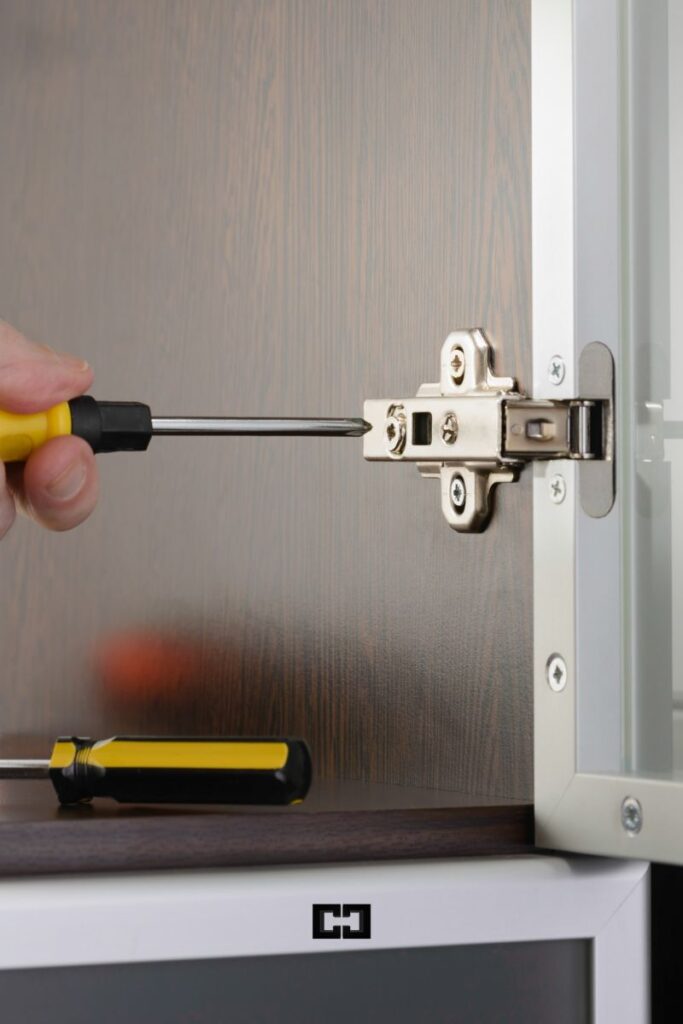Way to research a bit before you are standing in the Home Depot or Lowes aisle of hinges and fasteners and are completely overwhelmed. Hinges are a fundamental element in many projects, from cabinets and doors to furniture and outdoor structures but if you haven’t used them before, they might all look pretty much the same.
This comprehensive guide aims to demystify the world of hinges, providing you with the knowledge needed to choose the right hinge for every project. We will explore the various types of hinges available at hardware stores, what makes each one unique, how they operate, and their best applications. Whether you’re building a simple storage box or installing a new door, this guide will help you understand the hinges you need to bring your projects to life.
Types of Hinges
Butt

- Overview: Butt hinges are the most common type of hinge used in residential applications. They consist of two rectangular leaves with interlocking knuckles connected by a pin.
- Applications: Ideal for doors, cabinets, and furniture. They are often used in pairs or sets of three for heavier doors.
- Nuances: Available in various sizes and finishes. Some models feature removable pins for easy door removal, while others have fixed pins for added security. Proper alignment during installation is essential to ensure smooth operation.
Concealed (European Hinges)

- Overview: Concealed hinges are hidden from view when the cabinet door is closed, providing a clean and modern look.
- Applications: Widely used in kitchen cabinets, bathroom vanities, and high-end furniture.
- Nuances: They offer a wide range of adjustability, which simplifies alignment and installation. Some models have soft-close features to prevent slamming. They require precise drilling and mounting, often needing a cup hole bored into the door.
Overlay
- Overview: Overlay hinges are designed to allow the cabinet door to overlay the frame, creating a flush look.
- Applications: Suitable for kitchen cabinets and other frameless furniture.
- Nuances: Available in different overlays, such as full overlay and half overlay, to accommodate various cabinet styles.
Inset
- Overview: Inset hinges allow the door to sit flush with the frame, providing a seamless and integrated look.
- Applications: Used in inset cabinet doors where the door fits inside the frame.
- Nuances: They require precise installation to ensure the door sits perfectly within the frame. They can be traditional or concealed, depending on the desired aesthetic.
Continuous (Piano Hinges)
Overview: Continuous hinges run the entire length of the door or lid they are attached to, providing maximum support and even weight distribution.
Applications: Commonly used for piano lids, cabinets, toolboxes, and storage chests.
Nuances: They offer superior stability and durability for heavy or frequently used applications. They come in different lengths and materials, including stainless steel and brass, to suit various environments.
Spring
- Overview: Spring hinges contain a built-in spring mechanism that automatically closes the door after it is opened.
- Applications: Ideal for doors that need to close automatically, such as garage doors, fire doors, and gates.
- Nuances: Available in single-action and double-action models, depending on whether the door needs to swing in one or both directions. The tension of the spring can usually be adjusted to control the closing speed and force.
Double Action
- Overview: Double action hinges allow doors to swing in both directions, making them ideal for saloon or cafe doors.
- Applications: Commonly used in commercial spaces, restaurants, and kitchens.
- Nuances: These hinges have springs on both sides to return the door to the center position after swinging. They require precise installation to ensure smooth and balanced operation.
Flush
- Overview: Flush hinges are designed to be almost invisible when the door is closed, with only a small portion of the hinge leaf visible.
- Applications: Commonly used for small boxes, cabinets, and lightweight doors.
- Nuances: They do not require mortising into the door or frame, making installation simpler. However, they are not as strong as butt hinges and are best suited for lighter applications.
Pivot
- Overview: Pivot hinges allow the door to pivot from a point at the top and bottom, rather than from the side.
- Applications: Often used for heavy or oversized doors, such as entry doors, bookcase doors, and room dividers.
- Nuances: They provide a sleek look and can handle more weight than traditional hinges. Installation requires precise alignment and additional hardware to support the pivot mechanism.
Barrel
- Overview: Barrel hinges are small cylindrical hinges used for lightweight applications, providing a clean and concealed look.
- Applications: Perfect for small boxes, jewelry cases, and lightweight cabinets.
- Nuances: They are mortised into the door and frame, making them nearly invisible when the door is closed. They are not suitable for heavy or frequently used doors.
Strap
- Overview: Strap hinges have long, narrow leaves that provide strong support and are often used for decorative purposes.
- Applications: Commonly used on gates, barn doors, and large outdoor doors.
- Nuances: Available in various designs and lengths, they provide both structural support and decorative appeal. They are suitable for heavy doors and can handle significant weight.
Parliament
- Overview: Parliament hinges have extended leaves that allow doors to swing open 180 degrees or more.
- Applications: Used for French doors, shutters, and other doors that need to open wide.
- Nuances: They provide extra clearance and are ideal for situations where a wide opening is necessary.
Case
Overview: Similar to butt hinges but generally smaller and more delicate.
Applications: Used for small boxes, cases, and lightweight doors.
Nuances: They provide a neat finish for small-scale projects and are often available in decorative finishes
H Hinges
Overview: Shaped like the letter “H,” these hinges are mounted flush with the door and frame.
Applications: Suitable for cabinets, small doors, and shutters.
Nuances: They provide a decorative look and are easy to install.
HL Hinges
- Overview: Similar to H hinges but with an additional L-shaped leaf.
- Applications: Often used on chest lids, doors, and cabinets.
- Nuances: They offer additional support and a distinctive look, combining both functional and decorative elements.
Double Ball Bearing Hinges
- Overview: These hinges contain ball bearings for smooth operation and durability.
- Applications: Ideal for heavy and frequently used doors, such as commercial and exterior doors.
- Nuances: They reduce friction, ensuring smooth and quiet door movement over time.
Flag Hinges
- Overview: Flag hinges have a simple design where the hinge pin is fixed to one leaf, allowing the door to be easily lifted off without removing the pin.
- Applications: Ideal for doors or panels that need to be removed frequently, such as access panels and temporary installations.
- Nuances: Available in various sizes and materials, they provide flexibility for applications requiring easy door removal. They are not as strong as butt hinges and are best used for lightweight doors.
Knife Hinges
- Overview: Knife hinges are thin, flat hinges that resemble a knife blade, providing a sleek and modern appearance.
- Applications: Commonly used for high-end cabinetry and furniture.
- Nuances: They require precise mortising into the door and frame. They provide a minimalist look but are not as strong as traditional hinges, making them suitable for lightweight doors.
Friction Hinges
Overview: Friction hinges allow for adjustable resistance, holding doors or lids in place at various angles.
Applications: Commonly used in laptops, adjustable display screens, and specialized cabinets.
Nuances: They offer customizable resistance and are ideal for applications requiring precise positioning.
Tee Hinges
Overview: Shaped like the letter “T,” these hinges combine a strap hinge with a butt hinge.
Applications: Used for gates, garage doors, and shed doors.
Nuances: They provide both decorative appeal and robust support for heavy doors.
Soss Hinges
Overview: Soss hinges are completely hidden when the door is closed, offering a clean and unobtrusive look.
Applications: Used for high-end cabinetry, secret doors, and furniture.
Nuances: They require precise installation but offer a sleek and modern appearance.
Understanding the various types of hinges and their applications is essential for any DIYer looking to tackle home improvement projects. Each hinge type has its unique characteristics and ideal uses, and choosing the right one can make a significant difference in the functionality and aesthetics of your project. With this guide, you are now equipped with the knowledge to select the perfect hinge for any task, ensuring your DIY endeavors are both successful and satisfying.
Find other helpful information here about Forstner Bits that can help you with all your DIY projects




